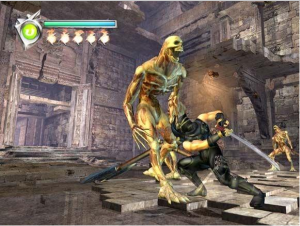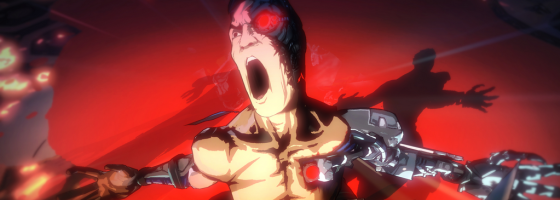The confusing next game in the Ninja Gaiden series: Yaiba Ninja Gaiden Z was released recently to poor reviews, with the combat system being cited as one of the main problems. And after watching two minutes of gameplay footage I could tell exactly why the combat system doesn’t work and it is one of the biggest traps of game design in action titles.
One on One vs. One on Many:
With any 3D action title, there is one critical decision that has to be made as the foundation for the combat system– Is combat focused on wide fighting or narrow fighting?
Narrow fighting is where the player’s move set is based on fighting a single opponent. Usually the character attacks with a combination of strong and fast attacks with a focus on agility. Titles like Ninja Gaiden Black, Devil May Cry and fighting games are examples of this type of design. The player may unlock or have access to an attack or weapon based on hitting multiple enemies, but the main weapon is all about single combat.
Wide fighting is where the player’s move set is instead focused on fighting multiple enemies at the same time. Here, the combat is separated by having an attack that hits one enemy or a narrow cone and a wide attack that hits everyone around the player. The narrow cone is the stronger attack while the wide one is usually weaker.
The difference between wide and narrow fighting can also be seen in the encounter design. Narrow based combat systems usually keep the enemy encounters small, giving the player small groups of challenging enemies to fight. While wide fighting is all about flooding the player with enemies from all sides with the occasional elite enemy to distract the player.

Ninja Gaiden Black featured narrow combat design, allowing for a far more greater degree of control.
When it comes to good action game design, building your combat system around narrow combat is the better alternative and then branching out into wide attacks as opposed to the reverse.
The reason is that game balance is a lot easier to achieve and grow that way.
The best way to see what I mean would be to look up footage of Ninja Gaiden Black or Sigma, which was narrow combat focused and compare it to Yaiba which was wide. You can tell almost immediately that the combat in Black was far more responsive while Yaiba’s was more chaotic and hard to follow.
That brings up another great advantage of smaller enemy groups: Keeping the camera system focused. In a lot of wide focused games, the camera gets stretched out to the point where it becomes hard to see enemies.
Specifically, make sure to watch how Yaiba’s support and elite enemies were designed. Because of the wide focused of the design, these enemies were made to not have their attacks interrupted. Also notice how chaotic the player was moving around between dodging and wide attacking.
It’s very hard to control the character in wide combat as combos tend to take away control from the player while it’s being played out. All in all, wide focused games lack the technical focused seen in narrow games.
God of War (At least the first one) was more focused on narrow design, despite having wide attacks and group fighting. The main point was that the primary attack of Kratos was the narrow form of the blades of chaos. However titles like Mark of Kri, Ninja Gaiden Black and others were better in this regard.
When it comes to the hallmark of a good action game, narrow design for me is the better choice as it allows for more varied design and challenges. Again, this is one of those things that it’s best to experience either by watching footage or playing the actual game to get the full effect.

